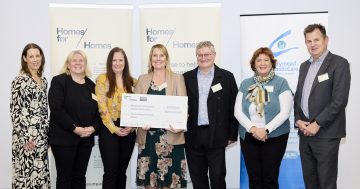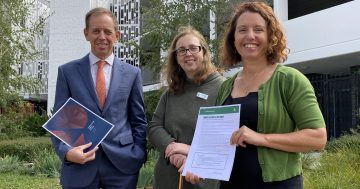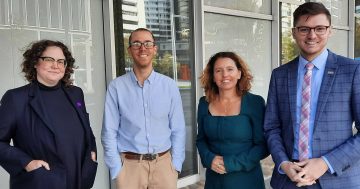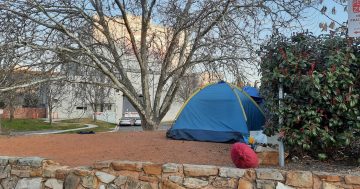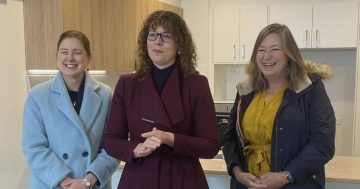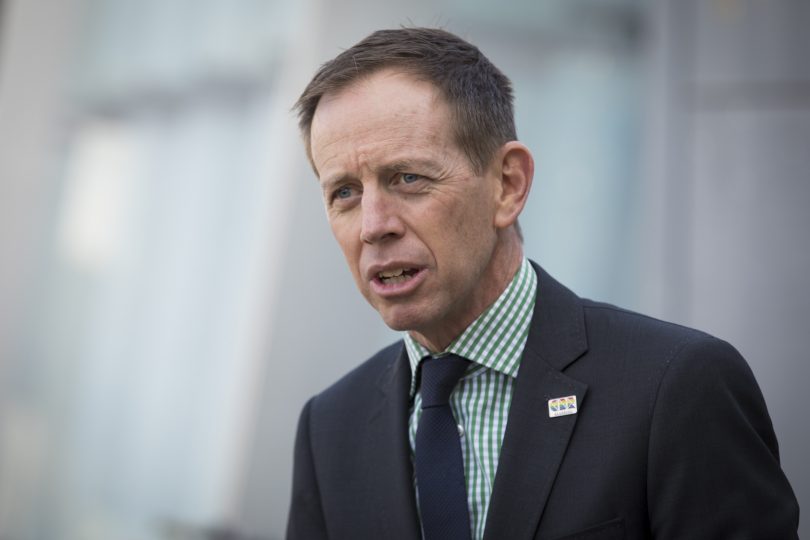
ACT Greens’ leader Shane Rattenbury has pledged to end homelessness in the Territory by 2025. Photo: Michelle Kroll.
The ACT Greens have pledged to spend $450 million over the next four years to end homelessness in the ACT under the party’s ‘Home for All’ package.
Under the proposal, $200 million will be spent on 600 new ‘climate-ready’ rental properties for people in need, while an additional $200 million will be spent on a further 400 properties for social housing.
An extra $21 million will be set aside for specialist homelessness services over the next four years – a 20 per cent increase – while MyHome in Curtin will receive $8.5 million to house 20 people with enduring mental illnesses.
There will also be $9 million to deliver new beds in Canberra’s homelessness services and specialist workers in existing homelessness services, $8 million for another 20 homes at Common Ground in Gungahlin and $300,000 to establish an Aboriginal-controlled Indigenous community housing organisation.
However, demographer and population expert at the Australian National University (ANU), Dr Liz Allen, says it will take a more concerted and systemic effort to eradicate homelessness in the ACT.
“Solving homelessness is an admirable but complicated endeavour; you could say homelessness is a stubborn social problem,” Dr Allen said.
“Many attempts, albeit piecemeal, have been made to address homelessness in Australia and, indeed, Canberra. Eliminating homelessness requires a suite of policy and practice, and it will take time and serious effort.
“Any attempt to redress homelessness must be earnest and approached with compassion with the long view in mind, and not used just used as a short-term election platform.”
The homelessness announcement was made at the ACT Greens’ 2020 election campaign launch where leader Shane Rattenbury unveiled the party’s platform which will focus on housing affordability, climate action and local jobs.
“It is time to meaningfully address our housing crisis,” Mr Rattenbury said.
“Canberra has the highest average incomes in the country, and yet growing inequality means that people are still living on our streets, couch-surfing, and struggling to pay rents.
“Ending homelessness in Canberra is long overdue – it has been allowed to continue in Canberra for far too long – even though our cold winters and hot summers.
“We understand the clear link between rough sleeping and homelessness and mental illness. Homelessness makes it nearly impossible to hold down a job. It is time to end these cycles.”
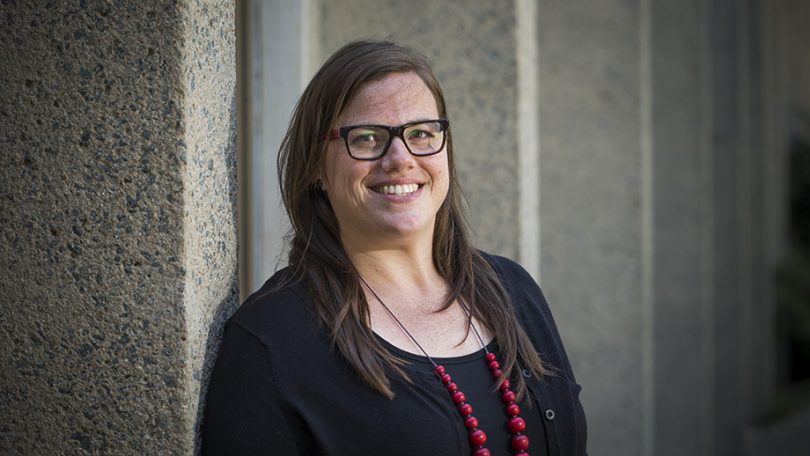
Dr Liz Allen says reform across a multitude of sectors is needed to address homelessness. Photo: ANU.
According to census data between 2006 and 2016, there have been no major decreases in the number of homeless people or the number of people sleeping rough across Australia.
Dr Allen says the key to solving the problem is multi-faceted and systemic reform across a variety of sectors.
“People become homeless for a variety of reasons, everything from low income, illness and disability, drug dependency, criminality, social exclusion, family breakdown and violence to name just a few,” she said.
“Affordable housing, including social housing and secure housing for low-income families, is just one part of solving homelessness. Eliminating homelessness requires a suite of policy and practice, and it’ll take time and serious effort.
“Building a robust health system, comprised of dedicated mental health and drug and alcohol programs is essential. A well-funded public education system can help target programs to provide a better safety net for kids experiencing difficulties at school or at home.”
A recent study from the ANU found that the number of Australians who could not pay their rent or mortgage on time during the pandemic has more than doubled to 15 per cent.
This is three times higher for young people aged between 18 to 24, around 44 per cent of whom were unable to pay their rent on time.
There was also a threefold increase in house stress for Australians aged 18 to 24, and Australians aged 35 to 44 between April and May, increasing to 27.5 per cent and 19 per cent respectively.














